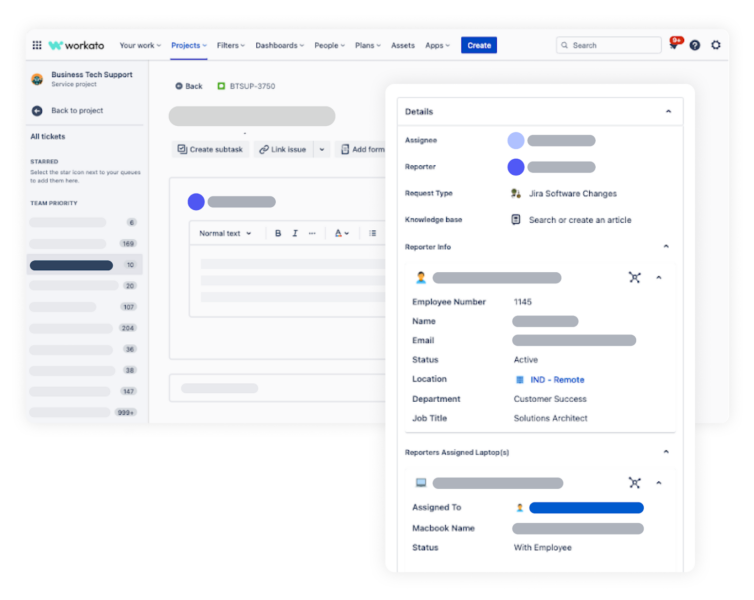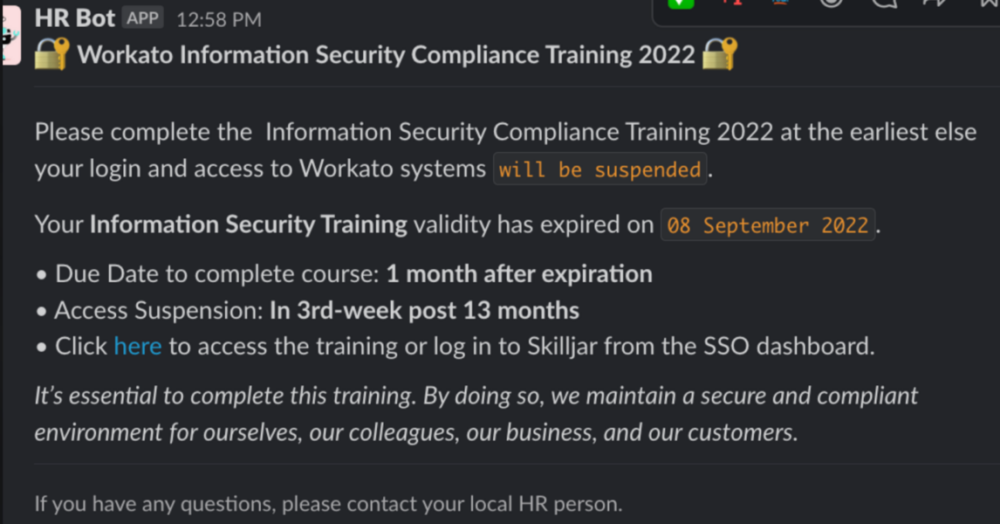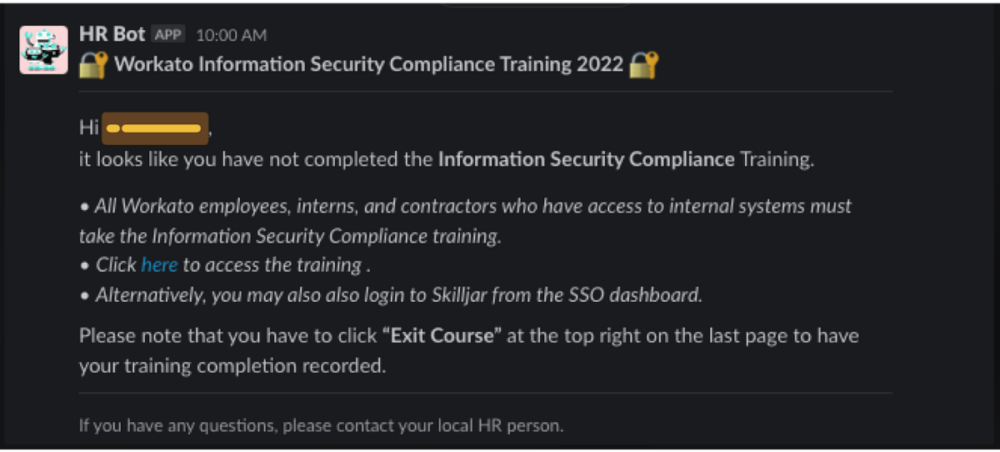As a business matures, so should its business processes.
Our BT (Business Technology) team embodies this concept to a tee by constantly reevaluating processes, reimagining how they can work, and, in many cases, automating them end-to-end based on their vision.
To give you an idea of how our BT team transforms their processes through automation, we’ll break down two examples. In each, they manage to build an automation that gives them several hours of time back every week, serves their business partners more effectively, and allows them to approach their work more strategically.
Related: 3 automations that allow our BT team to save time and money, as well as delight new hires
Accessing all of the relevant information for resolving a ticket in a single place
Our BT team is tasked with addressing various support requests, from fixing broken or poor-performing equipment to providing employees access to applications. And while the requests aren’t necessarily complex in nature, each of them were requiring someone from BT to hop between multiple applications just to find all of the relevant information.
For example, one of our agents would have to log into Jamf to find information on the employee’s laptop, access Snowflake to learn about the employee’s department or location, and get into Sigma to gather relevant information from our reports. This context switching alone would cost our agents several minutes per ticket, and considering that they had to resolve hundreds of tickets per week, this clearly wasn’t sustainable.
So our savvy BT team got to work on an automation that pipes all of the data from these systems into the application they use to manage tickets (Jira)—with the goal of having all the information they need easily accessible in one location.
To accomplish this, they decided to build a recipe, or automation, in Workato that triggered off 3 conditions:
- Whenever there’s a new record, such as a new employee, in our Employee Data Hub (i.e., the employee records we store in Snowflake), it gets added to Jira.
- Whenever a record changes in our Employee Data Hub—such as an employee changing managers—, the update gets reflected in Jira.
- Whenever there’s an update on an asset, like a laptop (e.g., it gets assigned to a new hire), the updated information gets reflected in Jira.
The result: every ticket that’s created in Jira includes up-to-date, essential information on employees and their devices. Moreover, with a single click, an agent can find the employee’s previous tickets, which can give the agent helpful context on the current issue.

With this automation in place, our agents save several hours per week; moreover, they’re now able to resolve issues much faster, which helps keep our employees happy and productive.
Automating security training reminders for every employee
Every year, our full-time employees and contractors take a security training course that helps them understand potential security threats, the best practices for sharing information, how they can keep devices and applications secure, and much more.
Unfortunately, our new hires and longer-tenured team members might forget about the course and fail to complete it on time.
This forced our BT team to follow a set of manually-intensive steps to find employees who haven’t completed them and ask them to do so.
More specifically, they’d have to log into the platform that hosts the course (Skilljar), export a CSV file, filter out the data for employees who haven’t completed their training or need to recertify, find the email addresses of those employees, and then send each of them a note via email and Slack. BT would then have to continually remind those who didn’t complete the course or recertify, and eventually create tickets to deprovision their applications.
Given how time-consuming, tedious, and chaotic this process was, our BT team knew that they needed to turn to automation.
They ended up building a recipe where employees receive an email and Slack message (via our platform bot, “HR Bot”) 30 days before they need to complete the course.

Fifteen days later, they’d go on to receive a similar reminder in both places, and they’d receive a final reminder when there’s only 7 days until they need to complete it.

If any employee still doesn’t complete the course after the due date passes, their manager gets notified in Slack. And if the manager isn’t able to get their direct report to complete it within a certain timeframe, the employee automatically gets locked out of their accounts—with Skilljar, Gmail, and Slack being the sole exceptions. That said, this situation doesn’t have to be dire for that employee: when they complete the course, the rest of their applications get reactivated within 5 minutes.
Given that the automation has made the reminder process 100% touchless for BT, they’ve saved countless time and an immeasurable amount of stress. Equally important, it’s allowed them to increase the percentage of employees that pass the training on time.
With these automations in place, along with the 1,000+ other automations BT has running in the background, their team can protect our data and applications effectively, provide experiences that delight and enable business teams, and implement processes that can scale effectively.

Ready to automate your IT operations?
Workato, the leader in enterprise automation, can help you streamline the processes above, in addition to countless others, without having to write a single line of code.
